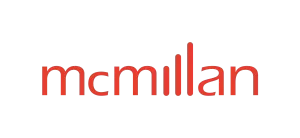Case Comment on Ehresman v The King, 2025 TCC 78 ("Ehresman")
"Preparing uninformative financial statements on the basis that only the CRA will see them is not a great look in the Tax Court"1
In Ehresman, the Tax Court of Canada reviewed in detail when a business' surplus cash and investments can constitute "assets used primarily in an active business" ("active business assets" or "ABA"'s) for the purpose of determining a shareholder's entitlement to the lifetime capital gains exemption set out at section 110.6 of the Income Tax Act ("LCGE"). The taxpayers were the shareholders of a business that owned and exploited oil wells, and they took the position that the surplus cash aimed to cover future decommissioning and remediation expenses.
The Court did not accept the taxpayers' argument, but offered useful guidance on how other taxpayers might help ensure ABA treatment for the portion of retained earnings that aim to cover future contingencies. A taxpayer cannot "set aside virtually unlimited amounts of property on the theory that there is a small and remote risk of an unlimited liability at an unspecified future date"; rather, there must be "a rational connection between the reasonably determined risk and the amount of the reserves".2 To that end, taxpayers can actively consider, in advance, what reserves are reasonably necessary to cover future risks, document those decisions and disclose those determinations in the business' financial statements.
The Facts
The taxpayers in Ehresman were a married couple who together owned all of the shares of C.C.M. Resources Ltd. ("CCM"). CCM operated two separate lines of business: one owning and operating oil wells in Saskatchewan, and a second involving financial services, including mutual fund and life insurance sales as well as financial and estate planning.3 Both lines of business were successful, which enabled the company to build up cash reserves.
The Ehresmans sold their CCM shares in 2014. At the time, CCM had $4.1 million of assets. If 50% of those assets constituted ABAs, the Ehresmans' gains from the disposition of their shares qualified for the LCGE.4 The Canada Revenue Agency determined that $1.37 million of CCM's assets constituted ABAs, including its oil wells, goodwill associated with its financial services business, operating bank account, accounts receivable and some miscellaneous assets. At issue was whether at least $710,000 of the surplus cash reserves also constitute ABAs. Generally speaking, ABAs exclude assets used in a "specified investment business"—which is a business whose principal purpose is to derive income from property (i.e., interest, dividends, rents and royalties).5 The Ehresmans claimed that CCM had to maintain significant reserves to cover the future cost of decommissioning and remediating its oil wells, such that at least $710,000 of its CCM's cash reserves should be considered ABAs.
The Decision
Justice Ezri, for the Court, reviewed the case law on whether cash investments can constitute ABAs, including the Supreme Court of Canada decision in Ensite,6 which concerned significant cash reserves deposited in Philippine banks as a legal requirement for obtaining a license to operate a plant in the Philippines. Ensite established that the test for whether cash deposits are used in an active business is whether their withdrawal "would have a decidedly destabilizing effect on the corporate operations" (which was found to have been the case of the Philippine bank deposits in Ensite).7 Subsequent case law has confirmed that setting aside funds to cover future adverse contingencies does not, in and of itself, suffice to characterise those funds as used in the active business; rather: (a) those contingencies must not be remote and (b) there must be a rational relationship between the contingency and the amounts set aside.8
Applying these principles, Justice Ezri concluded that there was no evidence showing that CCM needed to set aside anything close to $710,000 in 2014 to cover anticipated decommissioning and remediation expenses and that, instead, the Ehresmans' simply "earned money and kept the retained earnings in the business, reinvesting the income from the retained earnings for no particular reason".9 In reaching this conclusion, Justice Ezri called out the following facts:10
- CCM booked no liability for the decommissioning costs at any time in the years leading up the sale of the business. In response to the taxpayers' argument that CCM's financial statements were prepared exclusively for tax purposes, the Court noted that:
I just can't accept that an accountant who actually held the view that his company had a $1 million liability would not recognize a liability in the statements or at least in a note thereto. I would go so far as to say the failure to do so undermines the appellant's credibility. Preparing uninformative financial statements on the basis that only the CRA will see them is not a great look in the Tax Court.
- On a list of liabilities provided to the Canada Revenue Agency ("CRA") by CCM's accountant, a provision of only $100,000 was included with respect to decommissioning.
- There was no allocation of retained earnings between the oil business and the financial services business, which prevented the Court from ascertaining whether the surplus cash was even attributable to the oil business.
- CCM had no written plan to deal with the potential decommissioning costs.
- The Ehresmans never advised the CRA that large cash reserves were needed to deal with a decommissioning liability; rather their position "crystallized only after [they] realized that they would not be entitled to a capital gains exemption".
The Court criticized both parties for failing to call independent expert evidence with respect to the decommissioning costs CCM might reasonably be expected to face, lamenting that the limited evidence available supported "a liability range that ran from low to infinity with lower being more probable and very high being less likely".11 The Court concluded that the "theoretical possibility of huge decommissioning cost overruns" was not sufficient to make CCM's cash reserves ABAs, noting that "Not every possible risk can ground adding investment assets to an active business, lest the net be cast so wide that it gathers in all before it."12 Ultimately, the Court found that only $52,000—corresponding to the amounts of decommissioning assessments issued by the Government of Saskatchewan, and which had to be paid if CCM were to continue operating its oil business—were demonstrated to constitute ABAs.13
The Ehresmans also advanced an alternative argument that the surplus funds provided cash on hands to fund new investments. Justice Ezri held that the case law has previously held that such an objective does not convert funds to ABA.14
Observations
Ehresman provides useful guidance for business owners seeking to characterise some or all of their cash reserves as ABAs, and thereby preserve an entitlement to the LCGE. Essentially, the Court will likely be skeptical about after-the-fact justifications for keeping cash reserves, but instead will expect taxpayers to make reasonable efforts to ascertain what risks and contingences require reserves, the likelihood of those risks and contingences arising, and how much needs to be set aside to reasonably prevent disruption of the business should they arise. Those determinations should be documented and recorded – including in the business' financial statements even if they are not deductible for tax purposes.
Footnotes
1. Ehresman ¶50.
2. Ehresman ¶71.
3] Mr. Ehresman was an accountant by training and, at the start of his career, had numerous clients in the oil and gas industry (Ehresman ¶7).
4] The LCGE applies to dispositions of "qualified small business corporation shares", one of the criteria for which is that for two years prior to the sale, at least 50% of the fair market value of the corporation's assets be attributable to "assets used principally in an active business carried on primarily in Canada by the corporation [...]".
5. Ehresman ¶24-25, discussing the definitions of "active business" and "specified investment business" at paragraph 248(1) of the ITA.
6. Ensite Ltd v R, [1986] 2 SCR 509 ("Ensite").
7. Ehresman ¶28, citing Ensite ¶14.
8. Ehresman ¶30-¶32.
9. Ehresman ¶34.
10. Ehresman ¶50.
11. Ehresman ¶68.
12. Ehresman ¶69.
13. Ehresman ¶44,70.
14. Ehresman ¶74.
The foregoing provides only an overview and does not constitute legal advice. Readers are cautioned against making any decisions based on this material alone. Rather, specific legal advice should be obtained.
© McMillan LLP 2025


